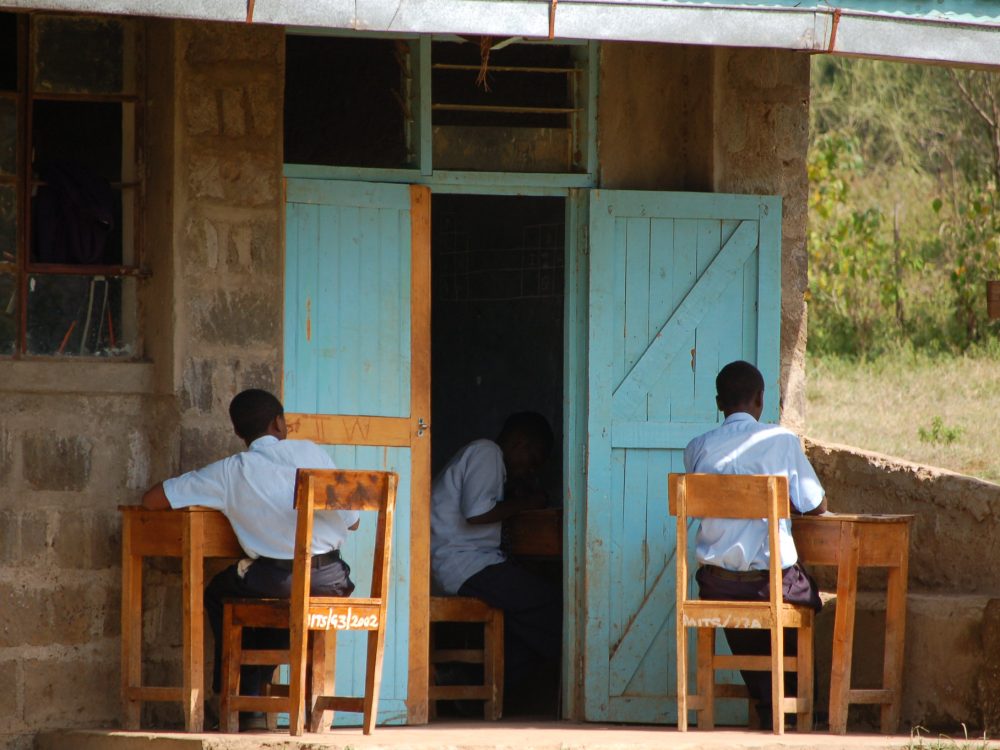
What Does a Good Agriculture Data System Look Like? Reflections from 2023 Festival de Datos
DG collaborates with national and subnational governments, civil society, farmers, private sector, and development partners to improve data systems and processes for data collection, sharing, and use in agriculture. From conducting digital agriculture ecosystem assessments in Ghana to working to build a first-of-its-kind comprehensive data system for livestock in Ethiopia, DG has significant learned experience in developing digital ecosystems that empower farmers and stakeholders across the value chain. While there is no one-size-fits-all approach to building an effective agricultural and food data system, our joint session at 2023 Festival de Datos posed the question: What does a “good” agriculture data system look like? In this blog post, we’ll delve into the key principles that emerged from the discussion.
Key Principles of a Good Agricultural Data System
1. Include as much of the agricultural value chain as possible. This means taking a comprehensive view to data collection and use: from farmers and the inputs they use, to the crops they produce and even their routes to market. If policymakers do not have access to the complete picture of the entire agricultural supply chain, effective agricultural policy interventions become difficult to achieve. Good agricultural data systems look beyond crop yields and include data on such things as access to seeds, fertilizer, and include formal and informal markets.
2. Good systems are built from the ground up. Agricultural data systems implemented from the bottom-up (i.e., at farmer or farm-level) are more sustainable than those that are top-down or seek to extract predefined data from farmers. As one participant from the discussion rightly pointed out: “If you have to require a smallholder farmer to download an entire mobile application just to report on four numbers, you’ve already lost.”
Encouraging bottom-up participation can advance the mutually beneficial aspects of data systems. After all, when it comes to agriculture data, farm-level data is key not only for top-down stakeholders, like policymakers and government officials making decisions on investing in soil-specific seed and fertilizer varieties, but also for farmers and other local communities as they increase their yield by tailoring crops and farming techniques to their land. Therefore, data collectors should tailor their approach to first meet the needs of the farmers and communities providing that data; doing so will incentivize farmers and other data stewards to report timely and useful data, which will ultimately benefit all interested parties and provide a more comprehensive picture of the data landscape.
Additionally, it pays to investigate what data already exists, rather than starting from scratch. An inclusive, effective data system builds on existing multi-stakeholder initiatives, avoiding a top-down imposition of data extraction and instead incentivizing data sharing. DG has taken this approach by assembling stakeholder councils and technical working groups to ensure our data systems were designed with maximum input from target users and stakeholders (e.g., our Cashew-IN and VIFAA programs). Through this approach, our partners were able to inform the development of the data systems they would use and ultimately, contributed to data governance efforts.
3. Good systems include participatory data governance mechanisms. Systems should facilitate data governance—which is a shared approach to managing data, systems, security, and resources—across disparate, often siloed data sources by clearly defining standards for data, interoperability and indicator calculations. Transparent and rigorous data standards that join up all parts of the data value chain can help break down barriers to data sharing in public-private partnerships.
In our VIFAA project, when developing systems for fertilizer data tracking and management, we centered concerns from farmers and policymakers but also recognized concerns from fertilizer corporations about sharing their data, particularly when it came to what they considered to be trade secrets. We acknowledged these needs through the use of nondisclosure and confidentiality agreements, creating trust with the private sector and enabling the development of a data system that could help everyone.
4. Finally, a good system doesn’t let perfect be the enemy of “good enough.” Participants of this session agreed that there are many agricultural data systems that exist—but very few of them can be considered “good,” especially if we stick to the definitions above. For example, many agricultural data systems are project or product-based, meaning that the data they hold are under exclusive rights by the entity (i.e., private company or development partner) carrying out the work. Other statistical data on agricultural systems is unreliable due to capacity and resource constraints that limit many countries’ abilities to conduct thorough agricultural or land use censuses.
But we posit that good agricultural data systems had to start somewhere and likely weren’t built overnight; what would make these systems good enough to start using for some imperfect but slightly-more-informed policy decisions? Can you start with collecting data on just one crop? Or can you start implementing changes in just one district? Maybe you don’t have enough data to say something with statistical certainty, but you can have enough confidence in the data to which you do have access to make informed decisions.
In the ever-evolving landscape of digital agriculture, the pursuit of a “good” agricultural data system requires adaptability, inclusivity, and a constant commitment to improvement. And as we continue to navigate this complex space, DG will continue to prioritize building agricultural data systems that are not just technologically sound but also responsive to the diverse needs of farmers and stakeholders. Stay tuned to learn more about our process and learnings in our digital agriculture portfolio, including the launch of a comprehensive livestock data system in Ethiopia and developing numerous knowledge products for smallholder farms.
Share
Recent Posts

Beyond Kigali: Where Does Africa Go from Here with AI?
As governments, funders, entrepreneurs, and technology leaders rally around the AI moment and move towards actions, at Development Gateway, we are asking a different set of questions: Where is the data, and what is the quality of the data behind the algorithms? How will legacy government systems feed AI tools with fresh and usable data? Are Government ministries resourced to govern and trust the AI tools that they are being encouraged to adopt?

Shared Struggles, Shared Solutions: Education and Cross-Sector Data Use Insights
This blog draws on DG’s experience in climate, health, aid management, and agriculture to explore connections between the challenges of data collection, data hosting, and data governance across different sectors and what the solutions to overcoming them can teach us about strengthening education data systems.

Economic Toll of Tobacco-Related Diseases in Kenya: New Research Findings
Development Gateway: An IREX Venture (DG) is pleased to announce the publication of a research manuscript on the Economic Costs of Tobacco-Related Illnesses in Kenya. This research was carried out as part of the Tobacco Control Data Initiative (TCDI) activities in Kenya and is part of a broader report on Morbidity and Mortality from Tobacco Use in Kenya.